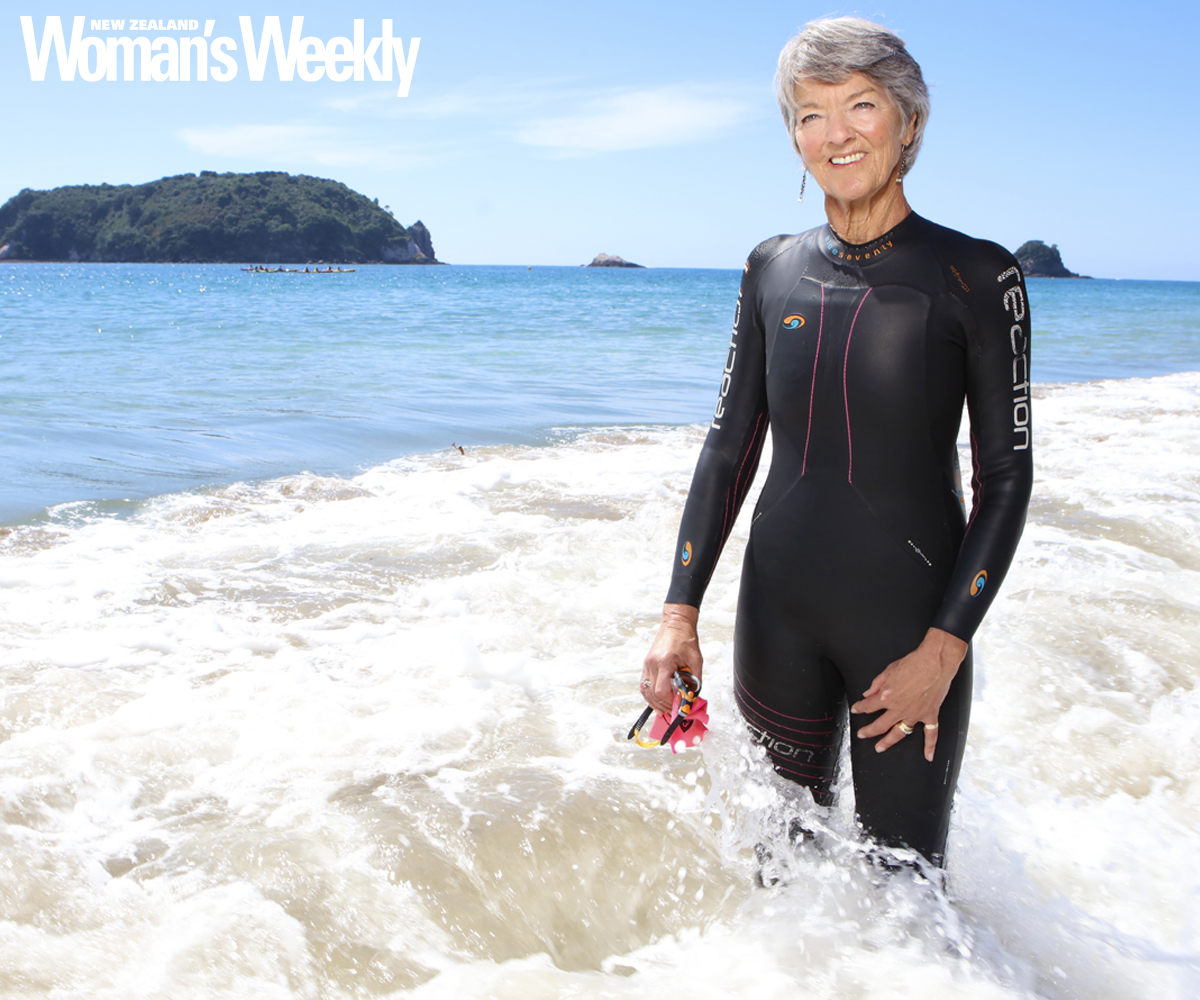Aquatic exercise is sometimes viewed as either the domain of grey-haired ladies treading water, or ultra-fit athletes powering through the pool at top speed.
But new research by an Australian physiotherapist shows that it may be an ideal form of exercise, especially for people with knee pain.
One common cause of knee pain is arthritis. In 2018, 17 per cent of Kiwis aged 15 or over were living with at least one type of arthritis, according to Arthritis New Zealand.
Exercise is a key management strategy, but it can be hard to do when it hurts. Exercising in water can be a great place to start, because the buoyancy, warmth and compressive forces make it more comfortable.
This is supported by research.
A 2014 systematic review by Monash University found that, for people with musculoskeletal conditions, warm water exercise was associated with a moderate reduction in pain and improvement in physical function and quality of life compared to non-active control groups.

The buoyancy of water helps to reduce the load on painful joints during exercise, so aquatic exercise can be more comfortable for people with arthritis compared to working out on land, explains physiotherapist Professor Rana Hinman, a Senior Research Fellow at the University of Melbourne.
“The heat of the water is an added bonus, which can help make painful joints and sore muscles feel less stiff during exercise.”
Aquatic physiotherapist Sophie Heywood explains that someone standing in waist-deep water is only taking 50 per cent of their body weight.
At chest depth, this reduces to 30 per cent. This means people can do functional leg exercises, like squats and heel raises, with significantly less joint loading.
Sophie, who is the clinical manager of Melbourne’s Aquatic Physio Exercise Australia, recently completed a PhD studying aquatic exercise.
She examined squats, calf raises and jumping at three different speeds – on land and in waist- and chest-deep water – in people with knee osteoarthritis and in healthy controls.
The findings, published this year in journal The Knee, confirmed that pain ratings during squats were significantly lower in water compared to on land.
They also showed that faster workouts in water produced higher relative loads compared to slow workouts, but with minimal pain. This suggests that aquatic exercise at faster speeds – to encourage greater loads – may be well tolerated by people with knee arthritis.
The findings highlight how different kinds of exercise achieve different outcomes.
Sophie explains that swimming and aqua-fitness usually fall under the category of cardiovascular conditioning. However, people need to consider other types of aquatic exercise for improving strength, balance and control.
“Rather than people going to the pool and thinking they’re ticking lots of boxes, they might be ticking only one box,” she says.
“We need to think about how we can use functional exercise in the pool to improve confidence with movement, control or power. They’re all different things.”
She adds that the goal is always to transfer those improvements to land-based activity.
However, “water provides a most amazing opportunity for someone who’s had a poor success with exercise on land. If they found it painful or felt disheartened by it, the pool is a great way to start exercise and build a sense that they can load [their joints] a bit more and gain some confidence.”

How aquatic exercise benefits general fitness
Acting as a bridge to better function on land is one of aquatic exercise’s main benefits.
Professor Hinman notes that, for many people with arthritis who haven’t exercised before, “the thought of exercising with joint pain
can sometimes be overwhelming and a little frightening. Aquatic exercise can be a useful starting point on the road to long-term self-management of arthritis,” she says.
“Some people start off with a short period of aquatic exercise then find they have the confidence to transition to a land-based exercise programme, such as one performed at home.”
Sophie says that many people with arthritis have been given an over-simplified, and often scary, explanation that their pain comes from cartilage damage causing joints to become “bone-on-bone”.
However, “pain is very complex,” she says. “It’s not coming predominantly just from cartilage.
“It’s easy to understand the theory that pain is complicated and exercise is the right thing to do, but it’s quite hard to put into practice and make that happen consistently enough to see gains.”
For people who have been told that movement is dangerous, or who have a subconscious sense that pain with movement is dangerous, the pool provides a bridge to a more positive connection with exercise.

While you might be concerned about showing up in your bathing costume, Sophie says their surveys show “that people are willing to put themselves in that vulnerable place” to try something they know might help.
“Typically, what you see is that drive to do something for themselves is bigger than concern about what they might look like. You can get in the pool with a pair of bike shorts and a T-shirt.”
She adds that going to the pool often has an added social benefit. It might be a nod and a smile from people you see regularly, to joining your aqua-fitness group for coffee after class.
“The pool is quite social,” she says. “And because [exercise is] less painful, people are generally happier and literally in a more buoyant mood.”
She advises staying well-hydrated by drinking water during and/or after your session, and taking care on wet surfaces around the pool.
This might mean leaving your shoes on until you get in the water and putting them straight back on afterwards, getting assistance around the pool, and/or showering in your bathroom at home afterwards rather than in an unfamiliar environment.
Professor Hinman says if you have arthritis, it’s ideal to get a programme that’s tailored to your needs.
“Arthritis affects everyone differently, and some people may benefit more from strengthening exercises while others may benefit more from functional exercises or a programme designed to increase cardiovascular fitness,” she explains.
There are many options, including individual or group classes supervised by physiotherapists, group classes at your local pool, or making up your own programme. The key is consistency.
“Find the option that suits you best,” she says.
“The benefits of exercise only come with doing the exercise, so it’s really important you stick to your aquatic exercise programme and perform it regularly.”
She says that you don’t need to be able to swim to do aquatic exercise. However, she advises non-swimmers to start out under the supervision of a qualified professional.
She adds that water exercise is safe for most people. You should seek a health professional before starting if you have:
Recently undergone surgery (such as a joint replacement)
Have an open wound, skin condition or current infection
Have an uncontrolled heart condition, heart disease or uncontrolled high blood pressure.
How to start aqua exercising
Sophie says there are several options:
Join an aqua fitness class and take it easy. “Know that you don’t have to work as hard as everyone else. Even if you just march on the spot for half the time, that’s totally fine.”
Go to a pool and walk up and down for 10 to 15 minutes. “Again, take it nice and slow. That’s going to give the lowest load for your joints.”
Add some squats and calf raises. Start with small, slow movements in deeper water. This puts the least load on your joints. She recommends starting with 10 to 30 repetitions, two or three days per week. Don’t stay in the pool longer than 15 or 20 minutes the first couple of times. After a few weeks, you can try moving into shallower water and increasing the size of your movements and repetitions.
For a more structured programme, see a physio for specific advice. Seeing a health professional – like your GP or physio – is also recommended if you haven’t been active or have other medical concerns.
 Getty Images
Getty Images



